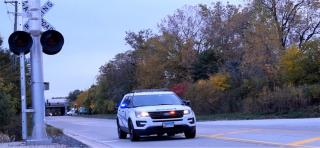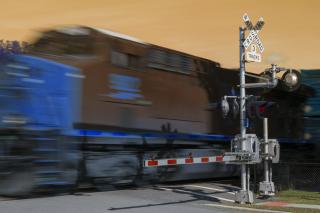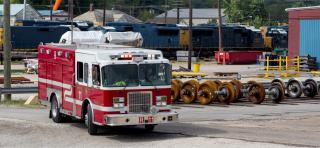First Responder Resources
Here's what first responders need to know about making safe decisions near railroad tracks.
Frequently Asked Questions about Highway-Rail Intersections
Why can't a train yield to an emergency vehicle?
It takes the average freight train hauling 6,000 tons and traveling at 55 mph a mile or more - the length of 18 football fields - to stop.

What's louder: A train horn or an emergency vehicle siren?
Even if emergency sirens and air horns are deactivated as emergency vehicles approach crossings, ambient noise levels in their cab could mask the sound of an approaching train horn.

What should emergency vehicle drivers do when approaching highway - rail intersections?
Turn off sirens, air horns and other sound-producing devices. Slow down, open the vehicle's window, and look both ways to see if a train is approaching. At crossings with obstructions or severe curves interfering with vision, stop your emergency vehicle and ask a crew member to go out and check on crossing safety.

Fast Facts
A train always has the right of way. Plan routes allowing drivers and other crew members clear views down the railroad tracks in both directions.
This is especially important if there is more than one railroad operating in your community. Make sure dispatchers have the railroads' emergency numbers.
If a train is blocking an intersection you must use, look for the number to call on the Emergency Notification System sign or contact your emergency dispatcher.
Emergency vehicles should park at least 15 feet from the nearest rail.
Tracks are active until you contact the railroad. Use all available reference points, especially the Emergency Notification System (ENS) sign. Call the number on the blue and white ENS sign and provide the DOT crossing number.
When fighting long-term brush or structure fires, contact the railroad before placing hoses so they can assist with feeding hoses under tracks. Doing so allows both safe, effective firefighting and train passage.
Operation Lifesaver offers free a Railroad Investigation and Safety Course for first responders.
Each crossing has a blue and white Emergency Notification System (ENS) sign with a specific 800 number and crossing identification number.
Multiple tracks can mean multiple trains traveling in either direction. Look both ways before proceeding.